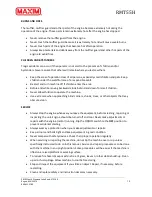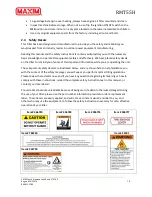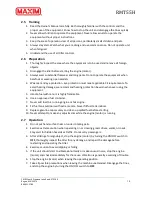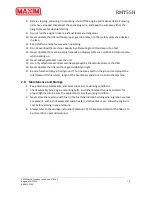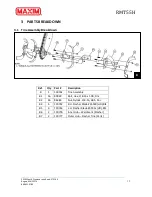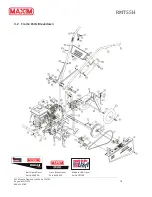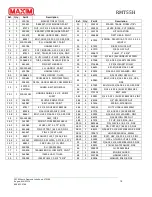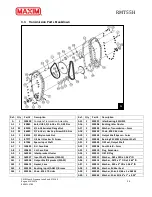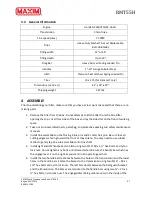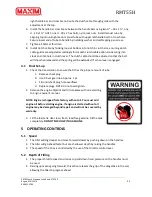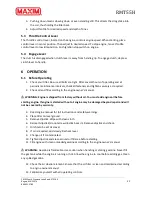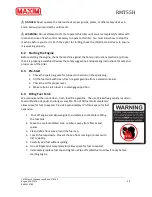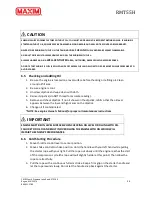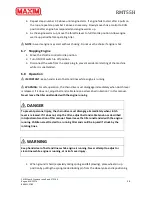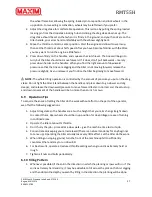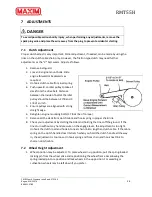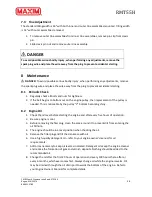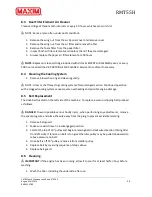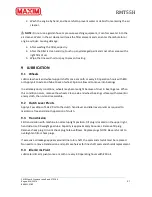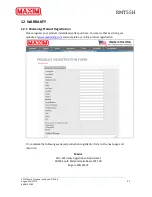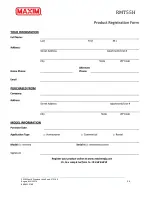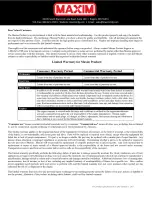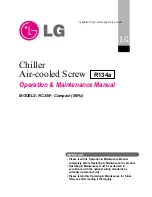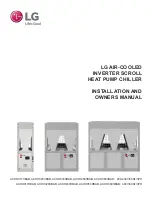
RMT55H
20195 South Diamond Lake Road, STE 100
Rogers, MN 55374
800.621-2789
27
the wheel frame bar allowing the spring-loaded pin to reposition and lock wheels in the
up position. For weeding or cultivation, wheels may be left down if you prefer.
2.
Adjust the drag stake for comfortable operation. This is done by pulling the spring-loaded
locking pin from the drop stake locking hub and sliding the drag stake down or up. The
drag stake should be set so that when it is firmly in the ground, and your hands are on the
tiller handle, your arms hand comfortably with the elbows slightly bent.
3.
Move the throttle control to center position. Start the engine and allow it to warm up,
then set the throttle at about half speed. After you have become familiar with the tiller,
you may want to run the engine a little faster.
4.
Press down firmly on the handles, and squeeze the clutch lever. The tines will begin to
turn, but the tiller should not move forward. If it does, don’t pull backwards – merely
press down harder on the handles. When you find the right amount of downward
pressure so that the tines are digging and the tiller is not moving forward, release the
pressure slightly. As you release it you’ll notice the tiller beginning to move forward.
⚠
NOTE:
The whole tilling operation is controlled by the amount of pressure you put on the drag
stake. Do not fight the tiller. Stand between the handles and press down to go slower and dig
deeper, and release the downward pressure to move forward faster. In normal soil, the actual up
and down movement of the handles will be no more than an inch or two.
6.9
Operation Tips
To acquire the knack of letting the tiller do the work without effort on the part of the operator,
we offer the following suggestions:
1.
Adjust drag stake so the handles are at such a height that your arms hang straight down
to contact them. Rear wheels should be in up position for deep tillage or ease of turning
in confined areas.
2.
Operate the tiller at about ¾ throttle.
3.
Don’t hurry the job – proceed at a slow walk – give the machine time to do its job.
4.
Concentrate on keeping your arms relaxed (There is a natural tendency for any beginner
to tense up). Operating the tiller actually takes very little effort. Let the tiller do the work.
5.
When tilling on sloping ground, turn the front of the machine uphill to sufficiently
counteract the tendency to run downhill.
6.
For best results, operate at reduced throttle settings when ground is extremely hard or
rough.
7.
Tighten all nuts and bolts periodically.
6.10
Tilling Pattern
1.
Whenever possible till the soil in the direction in which the planting or rows will run. If the
soil is extremely hard and dry, it may be advisable to till across the plot on the first digging
and then obtain the depth you want by tilling in the direction the planting will be done.

